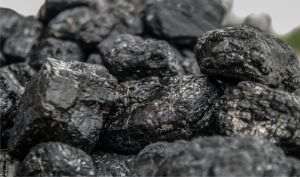A team of scientists in Florida has identified brain changes in dolphins comparable to those seen in patients diagnosed with Alzheimer's disease, associating these abnormalities with prolonged exposure to toxic algae that thrive in warm, polluted waters. The discovery, published in the prestigious journal Nature Communications Biology, was made by the Miller School of Medicine at the University of Miami (UM) and confirms the ecological and neurological risks of the phenomenon known as "toxic algal blooms" or "red tides." The study was based on analyses carried out on dolphins stranded in the Indian River Lagoon estuary, on the east coast of Florida, an area frequently affected by the proliferation of harmful algae. Researchers found very high concentrations of the toxin 2,4-diaminobutyric acid (2,4-DAB), a naturally occurring amino acid produced by certain species of algae and bacteria, in the brains of these mammals. Dolphins stranded during "red tide” episodes had up to 2,900 times more of the toxin in their brains compared to specimens found during periods without algal blooms. "Dolphins naturally develop amyloid and tau pathologies - two proteins implicated in cognitive decline in humans - and exposure to algal toxins can accelerate these neurodegenerative processes,” explained David Davis, a neurotoxicologist at the University of Miami.
• Parallels between dolphins and humans
Researchers identified abnormal protein accumulations and genetic changes similar to those found in Alzheimer's patients in dolphin brain tissue, especially in areas that affect neuronal communication and the blood-brain barrier - the structure that protects the brain from toxins circulating in the blood. "We observed transcriptomic parallels between dolphins exposed to algal toxins and Alzheimer's patients, suggesting that the environment plays a significant role in triggering neurodegenerative processes,” Davis said.
• An ecological problem with public health impact
The phenomenon of toxic algal blooms, intensified by global warming and increasing levels of nutrients in the waters (nitrates, phosphates from agriculture and sewage), is increasingly affecting marine fauna in Florida. "These results are concerning because dolphins share the same coastal waters with humans and are exposed to the same environmental risks,” warned Wendy Noke Durden, a researcher at the Hubbs-SeaWorld Institute. She added that the discovery raises questions about the impact of neurotoxins on other species, including humans.
• Red tides - a growing threat
"Red tides”, caused by the massive proliferation of Karenia brevis algae, have caused mass fish deaths and the closure of several beaches in Florida in the last decade. These phenomena release toxins that affect not only marine fauna, but also people who come into contact with the water or inhale contaminated aerosols. The study authors warn that climate change and water pollution may increase the frequency and intensity of toxic tides in the future, amplifying the risks to ecosystems and public health.
Dolphins, considered "sentinel species”, reflect the general health of the marine environment. The discovery of the Miami team could have significant implications for other coastal regions affected by pollution and algae blooms, including in the Mediterranean Sea or in the tropical areas of the Atlantic.
























































